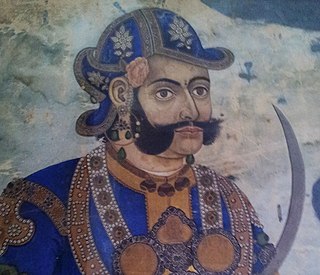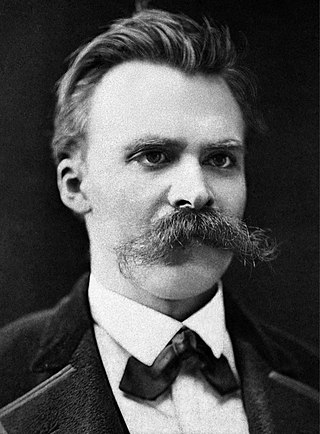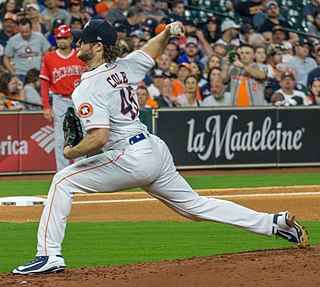
The United States Air Force (USAF) is the air service branch of the United States Armed Forces, and is one of the eight uniformed services of the United States. Originally created on 1 August 1907, as a part of the United States Army Signal Corps, the USAF was established as a separate branch of the United States Armed Forces in 1947 with the enactment of the National Security Act of 1947. It is the second youngest branch of the United States Armed Forces and the fourth in order of precedence. The United States Air Force articulates its core missions as air supremacy, global integrated intelligence, surveillance and reconnaissance, rapid global mobility, global strike, and command and control.

A beard is the hair that grows on the jaw, chin, upper lip, lower lip, cheeks, and neck of humans and some non-human animals. In humans, usually pubescent or adult males are able to start growing beards, on average at the age of 21.

Sideburns, sideboards, or side whiskers are facial hair grown on the sides of the face, extending from the hairline to run parallel to or beyond the ears. The term sideburns is a 19th-century corruption of the original burnsides, named after American Civil War general Ambrose Burnside, a man known for his unusual facial hairstyle that connected thick sideburns by way of a moustache, but left the chin clean-shaven.

A moustache is a growth of facial hair grown above the upper lip and under the nose. Moustaches have been worn in various styles throughout history.

A handlebar moustache is a moustache with particularly lengthy and upwardly curved extremities. These moustache styles are named for their resemblance to the handlebars of a bicycle. It is also known as a spaghetti moustache, because of its stereotypical association with Italian men. The Handlebar Club humorously describes the style as "a hirsute appendage of the upper lip and with graspable extremities".

The walrus moustache is characterized by whiskers that are thick, bushy, and drop over the mouth. The style resembles the whiskers of a walrus, hence the name.

Joseph Christopher McConnell Jr. was a United States Air Force fighter pilot who was the top American flying ace during the Korean War. A native of Dover, New Hampshire, Captain McConnell was credited with shooting down 16 MiG-15s while flying North American F-86 Sabres. He was awarded the Distinguished Service Cross, Silver Star, and the Distinguished Flying Cross for his actions in aerial combat. McConnell was the first American triple jet-on-jet fighter ace and is still the top-scoring American jet ace.

The Freeman Field mutiny was a series of incidents at Freeman Army Airfield, a United States Army Air Forces base near Seymour, Indiana, in 1945 in which African American members of the 477th Bombardment Group attempted to integrate an all-white officers' club. The mutiny resulted in 162 separate arrests of black officers, some of them twice. Three were court-martialed on relatively minor charges. One, Roger C. Terry, was convicted. In 1995, the Air Force officially vindicated the actions of the African-American officers, set aside the single court-martial conviction and removed letters of reprimand from the permanent files of 15 of the officers. The mutiny is generally regarded by historians of the Civil Rights Movement as an important step toward full integration of the armed forces and as a model for later efforts to integrate public facilities through civil disobedience.

George James Parros is an American former professional ice hockey player who played nine seasons in the National Hockey League (NHL), who currently serves as the head of the NHL's Department of Player Safety, with the title of senior vice president of player safety. In this role Parros is tasked with determining the suspensions or fines handed out for various on-ice incidents in the NHL. His primary role on the ice was that of an enforcer. Parros was part of the 2007 Stanley Cup winning Anaheim Ducks.

Robin Olds was an American fighter pilot and general officer in the United States Air Force (USAF). He was a "triple ace", with a combined total of 17 victories in World War II and the Vietnam War. He retired in 1973 as a brigadier general, after 30 years of service.

The Handlebar Club is an association of aficionados of the handlebar moustache, based in London. The club's sole requirement for membership is "a hirsute appendage of the upper lip and with graspable extremities"; beards are absolutely forbidden. The club engages in activism to assuage discrimination against the handlebarred as well as competitive facial hair tourneys, and has inspired the foundation of transatlantic and Scandinavian counterparts. The club declares itself to be at war with a society that demands people choose "the bland, the boring and the generic"; a club chant includes the proposition that being kissed by a smooth face is akin to "meat without the salt".

Facial hair is hair grown on the face, usually on the chin, cheeks, and upper lip region. It is typically a secondary sex characteristic of human males. Men typically start developing facial hair in the later stages of puberty or adolescence, around fifteen years of age, and most do not finish developing a full adult beard until around eighteen or later. However, large variations can occur; boys as young as eleven have also been known to develop facial hair, and some men do not produce much facial hair at all.

Facial hair in the military has been at various times common, prohibited, or an integral part of the uniform.

Brian Lee Losey is a retired rear admiral of the United States Navy. He headed the Naval Special Warfare Command from 2013 until his retirement in 2016. Losey is a native of Tacoma, Washington.

Robert Høneren Johansson is a Norwegian ski jumper. He is a former ski flying world record holder, having landed a jump of 252 m (827 ft) in Vikersund on 18 March 2017. Johansson has often been nicknamed the "Wing Commander" for his distinctive handlebar moustache.
The Mustache Gang is a term coined for the 1972 Oakland Athletics baseball team, a team that broke the traditionally conservative baseball views by sporting mustaches. From the change in American men's fashion away from facial hair in the 1920s to the early 1970s, there had only been two baseball players who had facial hair during the regular season: Stanley "Frenchy" Bordagaray of the Brooklyn Dodgers, who was then ordered to shave by his manager, and Wally Schang of the Philadelphia A's.

Since 1976, the New York Yankees of Major League Baseball (MLB) have maintained a strict appearance policy, specifying that players' hair must not touch their collars and that they may have mustaches but no other facial hair. The policy came from then-franchise owner George Steinbrenner, who believed that regulating his players' appearance would instill a sense of discipline. Steinbrenner began noting which players he believed needed haircuts when he took over the Yankees in 1973, but the policy was not codified until three years later. Steinbrenner's policy remains in place after his death, and has led to a number of dramatic appearance changes for players who come to the Yankees from other teams, such as Oscar Gamble, as well as pushback from players who prefer long hair and beards. In 1991, Don Mattingly was taken out of the Yankees' lineup for a day when he refused to cut his hair.
Secular laws regulating hairstyles exist in various countries and institutions.
















